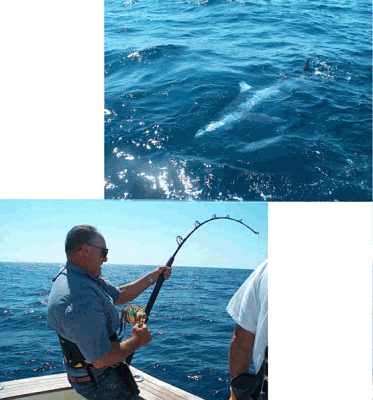Rods


the shark fisherman picture comes from http://www.everol.com/
the fly fisherman picture comes from http://www.alaska.net/~ehelton/PIC08.html
The fishing rod is one of the basic pieces of equipment for fishing. Whether you are pulling in the big one with a deep sea pole or just catching pan fish with a cain pole a rod is a crucial tool. It is possible to hand line small fish but this method is severely limited and can be painful if you hook into a large fish.
The pole used depends on the type of fishing you are doing. For smaller fish long thin poles are used. For big fish thicker and usually shorter poles are used.
Fly rods are usually the longest. Some of them approach 3 m. While deep sea fishing poles are commonly only 1.5 m.
One of the primary functions of a pole is to aid in casting. This is important in many instances because fish are not always swimming right next to you. Casting works through a combination of projectile motion and rotational motion of the rod.
You use the length of the rod to increase the velocity of your lure. When you release your line for the cast the angular velocity of your lure becomes a projectile.
By increasing the velocity of the lure you increase its momentum.
You apply a torque to the rod causing an acceleration. The amount of acceleration is dependent on the length of the rod.
Angular acceleration equals the torque over the moment of inertia. The moment of inertia equals 1/12 mass multiplied by the length of the pole.
Since the acceleration is the change in velocity over time, the velocity of the lure is dependent on the length of the rod, the torque applied, and the period of time applied.
![]()
http://www.sites.gulf.net/omni/tackle.htm
reels
line
tackle